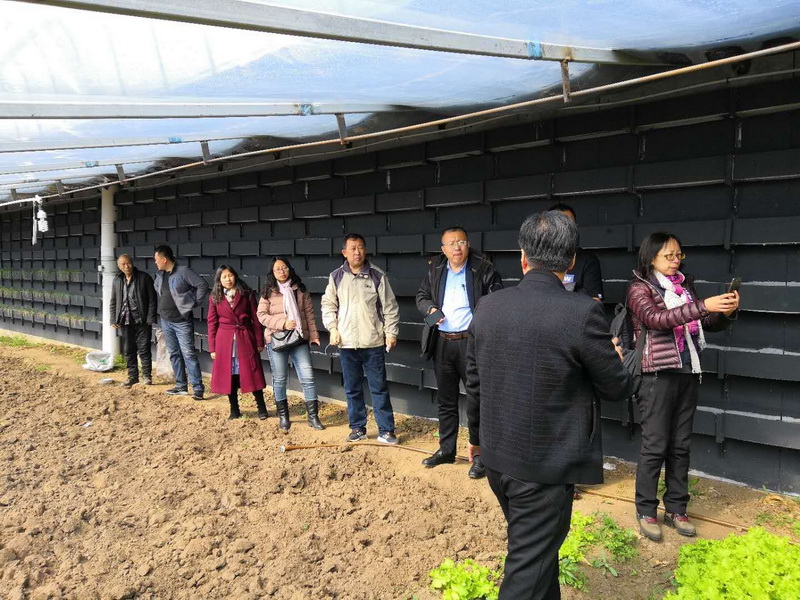Scientists Promote Ecological Restoration and Agroforestry Economic Transformation & Development
From February to March 2019, HE Xingyuan, PI (principal investigator) of the national key R&D project “Ecological Protection and Biological Resource Exploitation & Utilization in Northeast Forest Areas: the Technologies and Demonstrations”, and other scientists who participated in this project organized and carried out a series of technological achievement demonstration activities in Jilin Provinces, aiming to enhance the impacts of the project, meanwhile, help relevant counties in ecological restoration and agroforestry economic transformation & development.
On February 27th, HE Yan and BAO Gang, two deputy Chief Executives of Dongliao County Government, Jilin Province, CUI Yingjian, deputy director of Dongliao Bureau of Forestry, as well as the team members of the key R&D project gathered at the Northeast Institute of Geography and Agroecology (NIGA). The two sides discussed technical problems encountered in the construction of water conservation forests in the Liaohe Basin. For the preliminary plan of Dongliao County to develop large-scale oak forests (Quercus mongolica) for sericulture, Prof. HE Xingyuan, YU Jinghua, and ZHAO Hengtian, etc., argued that the large-scale development of one single industrial project in a region will inevitably bring great management and marketing risks. They thus recommended that the Dongliao County Government to adopt a diversified development strategy: in the areas adjacent to water sources, water conservation forests can be developed in combination with tourism; in the areas far away from water sources, water conservation forests are suggested to be established with consideration to both ecological and economic interests, for example, by developing under-forest economy in the following ways: breeding silkworm, planting fruit trees, vegetables, flowers, and medicinal herbs; reducing pesticide residues in agricultural products to enhance economic efficiency; and introducing social funds to improve afforestation success. The recommendations by scientists received recognition and praise from the government officers of the Dongxiao County. They believed that the expert team proposed new and feasible approaches in forest water resources conservation and agroforestry economic transformation; meanwhile, they invited the experts to visit Dongliao at their convenient time.
On March 15th, PIAO Yunlong, deputy Chief Executive of Antu County, Jilin Province, visited the NIGA and consulted with the core members of the key R&D project (Prof. WANG Zhenyue, Prof. GAO Yugang, Prof. ZHANG Yue, etc.) about the difficulties in implementing the 'returning farmland to forests’ program.
On the 27th, JIANG Ming, deputy director of the NIGA, accompanied by Prof. YU Jinghua, YU Lizhong, senior engineer, Prof. CHEN Wei, Prof. ZHANG Yue, and several other members of the project visited Antu County and conduct in-depth communication with some of the staff of Antu Bureau of Forestry.
For the hybrid hazelnut planting industry in Antu County, YU Jinghua provided the following suggestions and guidance: reduce pesticide residues and improve quality of products; breed poultry under forest canopy to control weeds and pest insects; adopt wider (horizontal) spacing between trees to maintain ventilation and reduce the incidence of disease and pest insects; use stem or root cuttings to large-scale produce cold-resistant varieties and establish hazelnut garden more readily. All of these were part of the technological achievements of the key R&D project. For the Rose Valley program that is being hatched up in Antu County, YU Jinghua suggested that the introduced varieties must be suitable for local planting. Good varieties are important for the extension of the industrial chain and can ensure benefits of the ‘downstream’ enterprises or forest farmers, he said. YU also stated that he would like to bring mature technical experience to guide and help the development of local rose processing industry. CHEN Wei said that the failed attempts of Yanbian Autonomous Prefecture, where people introduced non-cold-resistant varieties to develop the oil-oriented peony industry should have taught us a lesson. She therefore recommended to introduce Paeonia suffruticosa to enhance both cold resistance and ornamental value. For the extraordinarily high proportion of empty seeds in Pinus koraiensis forest plantations that has been large-scale developed in Antu County, WANG Yuanxing (senior engineer) clearly pointed out that it was because the grafts (might be from few trees grown in few pine plantations) were genetically close to each other. The high-yield technology of the key R&D project can be used to solve this problem, he said. Then all the team members expressed their willingness to support the development of relevant industries in Antu County.
In the near future, the team members of this key R&D project will carry out a series of other 'technical docking' activities with local governments, striving to publicize and demonstrate the achievements of this project in order to support the ecological restoration actions in Northeast forest areas and benefit more forest farmers.

| Download the attachment: |



